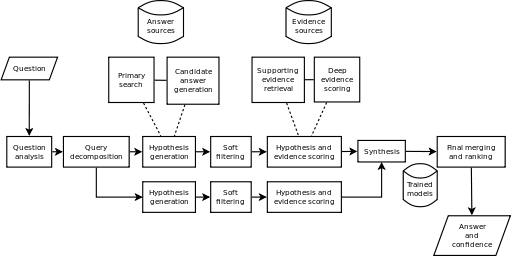Why Semantic Interoperability is needed in biomedical translational research?
In order to accelerate the discovery of new effective therapeutics for mental health and addiction treatment, there is a need to integrate data across disciplines spanning biomedical research and clinical care delivery [1]. For example, linking data across disciplines can facilitate a better understanding of treatment response variability among patients in addiction treatment. These disciplines include:
- Genetics, the study of genes.
- Chemistry, the study of chemical compounds including substances of abuse like heroin.
- Neuroscience, the study of the nervous system and the brain (addiction is a chronic disease of the brain)
- Psychiatry which is focused on the diagnosis, treatment, and prevention of addiction and mental disorders.
Each of these disciplines has its own terminology or controlled vocabularies. In the clinical domain for example, DSM5 and RrxNorm are used for documenting clinical care. In biomedical research, several ontologies have been developed over the last few years including:
- The Gene Ontology (GO)
- The Chemical Entities of Biological Interest Ontology (CHEBI)
- NeuroLex, an OWL ontology covering major domains of neuroscience: anatomy, cell, subcellular, molecule, function, and dysfunction.
To facilitate semantic interoperability between these ontologies, there are best practices established by the Open Biomedical Ontology (OBO) community. An example of best practice is the use of an upper-level ontology called the Basic Formal Ontology (BFO) which acts as a common foundational ontology upon which new ontologies can be created. OBO ontologies and principles are available on the OBO Foundry web site.
Among the ontologies available on the OBO Foundry is the Mental Functioning Ontology (MF) [2, 3]. The MF is being developed as a collaboration between the University of Geneva in Switzerland and the University at Buffalo in the United States. The project also includes a Mental Disease Ontology (MD) which extends the MF and the Ontology for General Medical Science (OGMS). The Basic Formal Ontology (BFO) is an upper-level ontology for both the MF and the OGMS. The picture below is a view of the class hierarchy of the MD showing details of the class "Paranoid Schizophrenia" in the right pane of the windows of the beta release of Protege 5, an open source ontology development environment (click on the image to enlarge it).
The following is a tree view of the "Mental Disease Course" class (click on the image to enlarge it):
Ontology constructs defined by the OWL2 language can help establish common semantics (meaning) and relationships between entities across domains. These constructs provide automated inferencing capabilities such as equivalence (e.g., owl:sameAs and owl:equivalentClass) and subsumption (e.g., rdfs:subClassOf) relationships between entities.
In addition, publishing data sources following Linked Open Data (LOD) principles and semantic search using federated SPARQL queries can help answer new research questions. Another application is semantic annotation for natural language processing (NLP) applications.
Ontologies as knowledge representation formalism for clinical decision support (CDS)
As knowledge representation formalism, ontologies are well suited for modeling complex medical knowledge and can facilitate reasoning during the automated execution of clinical practice guidelines (CPGs) and Care Pathways (CPs) based on patient data at the point of care. Several approaches to modelling CPGs and CPs have been proposed in the past including PROforma, HELEN, EON, GLIF, PRODIGY, and SAGE. However, the lack of free and open source tooling has been a major impediment to a wide adoption of these knowledge representation formalisms. OWL has the advantage of being a widely implemented W3C Recommendation with available mature open source tools.
In practice, the medical knowledge contained in CPGs can be manually translated into IF-THEN statements in most programming languages. Executable CDS rules (like other complex types of business rules) can be implemented with a production rule engine using forward chaining. This is the approach taken by OpenCDS and some large scale CDS implementations in real world healthcare delivery settings. This allows CDS software developers to externalize the medical knowledge contained in clinical guidelines in the form of declarative rules as opposed to embedding that knowledge in procedural code. Many viable open source business rule management systems (BRMS) are available today and provide capabilities such as a rule authoring user interface, a rules repository, and a testing environment.
However, production rule systems have a limitation. They do not scale because they require writing a rule for each clinical concept code (there are more than 311,000 active concepts in SNOMED CT alone). An alternative is to exploit the class hierarchy in an ontology so that subclasses of a given superclass can inherit the clinical rules that are applicable to the superclass (this is called subsumption). In addition to subsumption, an OWL ontology also support reasoning with description logic (DL) axioms [4].
An ontology designed for a clinical decision support (CDS) system can integrate the clinical rules from a CPG, a domain ontology like the Mental Disorder (MD) ontology, and the patient medical record from an EHR database in order to provide inferences in the form of treatment recommendations at the point of care. The OWL API [5] facilitates the integration of ontologies into software applications. It supports inferencing using reasoners like Pellet and HermiT. OWL2 reasoning capabilites can be enhanced with rules represented in SWRL (Semantic Web Rule Language) which is implemented by reasoners like Pellet as well as the Protege OWL development environement. In addition to inferencing, another benefit of an OWL-based approach is transparency: the CDS system can provide an explanation or justification of how it arrives at the treatment recommendations.
Nonetheless, these approaches are not mutually exclusive: a production rule system can be integrated with business processes, ontologies, and predictive analytics models. Predictive analytics models provide a probabilistic approach to treatment recommendations to assist in the clinical decision making process.
References
[1] Janna Hastings, Werner Ceusters, Mark Jensen, Kevin Mulligan and Barry Smith. Representing mental functioning: Ontologies for mental health and disease. Proceedings of the Mental Functioning Ontologies workshop of ICBO 2012, Graz, Austria.
[2] Ceusters, W. and Smith, B. (2010a). Foundations for a realist ontology of mental disease. Journal of Biomedical Semantics, 1(1), 10.
[3] Hastings, J., Smith, B., Ceusters, W., and Mulligan, K. (2012). The mental functioning ontology. http://code.google.com/p/mental-functioning-ontology/, last accessed August 24, 2014
[4] Sesen MB, Peake MD, Banares-Alcantara R, Tse D, Kadir T, Stanley R, Gleeson F, Brady M. 2014 Lung Cancer Assistant: a hybrid clinical decision support application for lung cancer care. J. R. Soc. Interface 11: 20140534.
[5] Matthew Horridge, Sean Bechhofer. The OWL API: A Java API for OWL Ontologies Semantic Web Journal 2(1), Special Issue on Semantic Web Tools and Systems, pp. 11-21, 2011.








